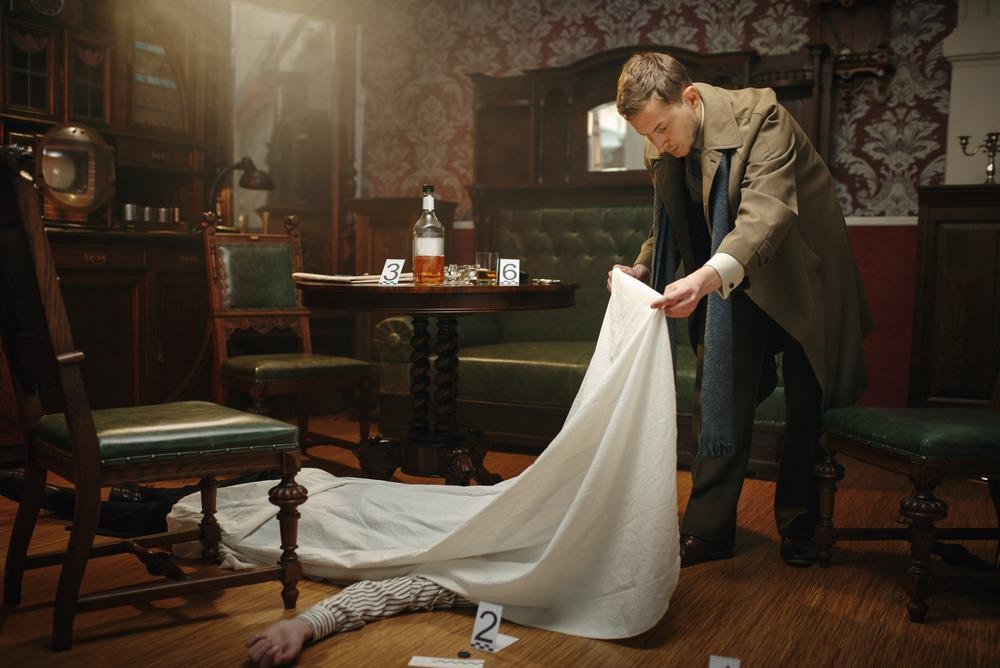The inception of the CSI series
Crime dramas with an emphasis on forensic science have become very popular over the last three decades. The general public’s fascination with the legal system stories is also well known, with the OJ Simpson trial being a premier example. Anthony E. Zuiker the creator of CSI was inspired by a forensic science series he watched on the Discovery Channel. He intended to show the world the practical applications of science when it comes to a crime scene and how science can help connect the dots when it comes to a criminal case.
Indeed when Zuiker’s idea came to fruition, it became a global success, popularizing forensic science to a vast audience. Since then, however, there have been observed some unexpected consequences on the jurors’ decision-making abilities.

Image Credit: Fer Gregory/Shutterstock.com
The first anecdotal instance of the CSI effect
In a New York Post article by Boniello in 2015, a case was described where police officers witnessed a drug deal. The main suspect resisted arrest, and amid the struggle, a bag filled with cocaine fell off the suspect. Although this incident would appear as a very straightforward win for the prosecution, the defendant was only found guilty for resisting arrest and not for drug dealing.
When the jurors were queried about their decision after the end of the trial they voiced their concern regarding the absence of DNA evidence of the suspect on the cocaine. It appeared as if the consumption of crime series prejudiced the jurors for particular types of evidence, and also misled them to form a much-skewed perception of what type of scientific analyses are being performed in an average criminal case.
A deeper dive into the CSI effect
In a study by Hawkins and Scherr, the effect of crime drama consumption by the general public was studied. The study included 284 participants, 92 males, and 192 females. The study revolved around a mock court case and the subjects were asked to decide whether or not the defendant was guilty or not guilty and also describe how confident they were on a 1 (not confident) to 9 (extremely confident) scale. The participants were divided into two groups where one group was the ‘’not engaged in crime dramas’’ whilst the participants in the other group were habitual consumers of such types of media/dramas.
Subsequently, each group was divided further into three sub-groups where the subjects were presented with 3 types of evidence; forensic only, eyewitness only, and both forensic and eyewitness. The results of this study demonstrated that crime drama engaged participants who were presented with forensic or eyewitness only evidence gave more confident not guilty verdicts compared to infrequent crime drama viewers. However, this observed evidentiary skepticism seemed to wane when both types of evidence were presented to the two main groups of this study.
Is the CSI effect observed within the investigators?
Misconceptions and unrealistic expectations are often held by the investigators themselves sometimes. Some of the investigators may have an over-reliance on anything that is even loosely related to forensic science. Generally, the job of an investigator is to piece together information that comes from the work of experts. Additionally, it has been observed in some cold cases that the investigator is tempted to use a newly emerging technique that has not been yet vetted and understood properly in hopes of finding that missing lead to complete the puzzle. This can have a negative bearing on the investigation, for example, by excluding the actual perpetrator because the DNA composite profile is not similar enough, or because the prosecution may question the validity of this new technique.
Therefore, a good understanding of what each forensic technique can do and what are their limitations is a vital piece of information for every crime scene investigator. When it comes to the CSI effect pertaining to investigators, the issue lies within the training investigators receive, which is superficial and does not provide a clear picture regarding the false positives and negatives certain forensic techniques can generate.

Image Credit: Nomad_Soul/Shutterstock.com
Are crime media shows helpful for the criminals?
Baranowksi et al. in their study entertained the idea of the ‘CSI-education’ effect. They created a study where the hypothesis was that the popularity of forensic series on television has made criminals more capable of covering their tracks. Linear regression modeling was used to compare crime clearance rates before and after the airing of CSI. The databases that were used were provided by the German and American federal bureau of investigation.
The independent variable was before and after the airing of the pilot episode of CSI. The clearance rate of all committed crimes (murder, rape, robbery, theft) was the dependent variable. It was found that some of the dependent variables in the US showed a decrease, so in other words, the clearance rates (i.e. a charge being laid) of murder and rape decreased. At first glance, this would support the existence of the ‘CSI-education’, however, the slope of the curve that describes the rate would have to change abruptly after the airing of CSI, but that was not the case.
Next steps
Future research would help refine the impact of the CSI effect on everyone involved in an investigation and could help in improving the general decision-making throughout a case; from the crime scene to the court of law.
Sources:
- Engaging the CSI effect: The influences of experience-taking, type of evidence, and viewing frequency on juror decision-making Ian Hawkins, Kyle Scherr, Journal of Criminal Justice 49 (2017) 45–52
- The CSI effect on cold case investigations, James L. Trainum, Forensic Science International 301 (2019) 455–460
- The CSI-education effect: Do potential criminals benefit from forensic TV series? Andreas M. Baranowski∗, Anne Burkhardt, Elisabeth Czernik, Heiko Hecht, International Journal of Law, Crime and Justice 52 (2018) 86–97
Further Reading
Last Updated: Apr 13, 2022